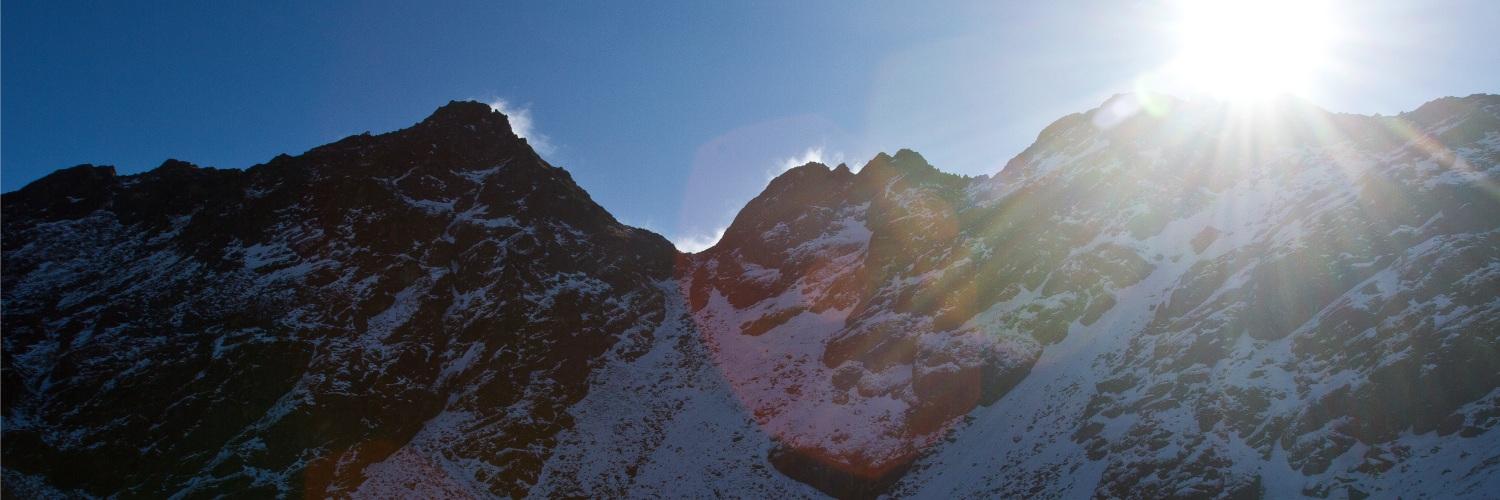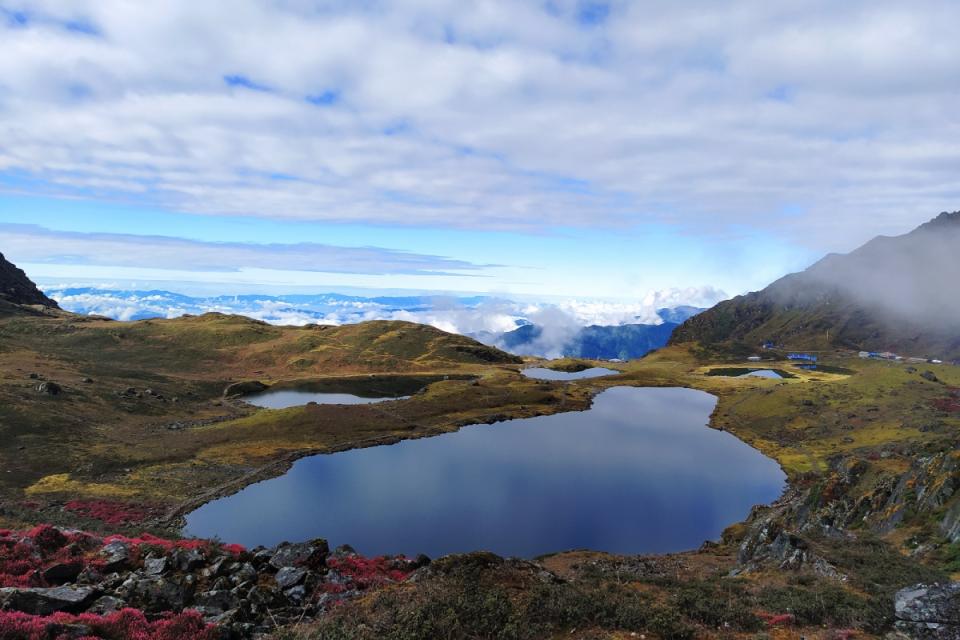Tucked away in the tranquil Sindhupalchowk district of Nepal lies a spiritual and scenic treasure - the Panch Pokhari Trek. Named after the five sacred alpine lakes that shimmer under the shadow of the majestic Jugal Himal range, this off-the-beaten-path journey is more than just a trek. It’s a fusion of breathtaking landscapes, cultural depth, and serene isolation.
Whether you're a seasoned trekker looking for a quiet alternative to Everest and Annapurna, or a spiritual seeker drawn to sacred Himalayan sites, Panch Pokhari offers a soulful experience at 4,055 meters above sea level - all in just five days.
What is Panch Pokhari?
“Panch Pokhari” translates directly to Five Lakes in Nepali. Revered by both Hindus and Buddhists, these pristine glacial lakes sit in the lap of the Jugal Himal range and are among Nepal’s highest altitude pilgrimage sites.
Every year during Janai Purnima (a sacred full moon festival in August), thousands of devotees make the arduous journey to these lakes for ritual baths, prayers, and blessings. Surrounding the lakes are ancient stone shrines, fluttering prayer flags, and a silence that feels sacred - inviting both physical reflection and spiritual clarity.
The area also lies within the Langtang National Park buffer zone, meaning it’s a protected sanctuary rich in biodiversity and untouched Himalayan wilderness.
Local Legends and Mythology about the Panch Pokhari
Panch Pokhari isn’t just about natural beauty - it’s a place of legends.
According to Hindu mythology, the five lakes were created by Lord Shiva himself. It’s believed that he meditated here to escape the chaos of the world. During Janai Purnima, pilgrims bathe in the lakes to purify themselves and seek spiritual liberation.
Each of the five lakes is associated with a different symbolic element - purity, wisdom, rebirth, peace, and power.
These stories echo through the winds as you trek - adding spiritual richness to every step you take.
Why Choose the Panch Pokhari Trek?
This trek is ideal for those who crave:
-
Isolation without sacrifice - a remote trail that doesn’t require weeks off work
-
Cultural immersion - explore Tamang and Sherpa villages along the way
-
Spiritual significance - visit sacred lakes and participate in centuries-old rituals
-
Panoramic Himalayan views - spot Langtang, Dorje Lhakpa, Gaurishankar, and Jugal Himal (7,000+ m)
-
Short duration, deep impact - the 5-day itinerary is compact yet soul-stirring
And unlike the busier trails, Panch Pokhari remains a best-kept secret - perfect for trekkers looking for meaning, peace, and majestic solitude.
Panch Pokhari Trek Highlights
-
Visit the sacred Panch Pokhari lakes at 4,055m
-
Explore Thulo Bhotang, a traditional Tamang village at 2,600m
-
Witness spectacular views of Jugal Himal, Dorje Lhakpa, and Langtang ranges
-
Walk through rhododendron forests, yak pastures, and high-altitude meadows
-
Camp beside glacial lakes surrounded by Buddhist shrines
-
Chance to experience Janai Purnima festival at the sacred lakes (in August)
-
A perfect spiritual escape just a short drive from Kathmandu
Panch Pokhari Trek Itinerary (5 Days)
Day 1: Drive from Kathmandu to Thulo Bhotang (2,600m)
-
Scenic drive (approx. 6-7 hrs) through terraced fields and local villages
-
Overnight in Thulo Bhotang - a cultural Tamang settlement
Day 2: Trek to Nosyampati (3,661m)
-
Begin ascent through alpine forests
-
Steady climb with first glimpses of the Himalayan skyline
-
Camp or lodge at Nosyampati, a peaceful ridge with yak pastures
Day 3: Trek to Panch Pokhari (4,055m)
-
Final steep ascent to reach the sacred lakes
-
Explore the five glacial lakes and visit ancient shrines
-
Enjoy panoramic views of Jugal Himal and surrounding ranges
-
Overnight near the lakes (lodging/camping based on season)
Day 4: Trek back to Thulo Bhotang
-
Retrace your steps downhill with views you missed on the way up
-
Rest and refresh in Thulo Bhotang village
Day 5: Drive back to Kathmandu
-
Return to city comforts
-
End of trek with reflections of a short yet profound journey
This itinerary is a sample itinerary and can be different in term of days which may be more.
Panch Pokhari Trek Difficulty
The Panch Pokhari Trek is considered a moderate trek - suitable for beginner to intermediate trekkers with basic fitness levels. While it involves steady ascents and reaches a high point at 4,055 meters, the short itinerary and gradual acclimatization make it manageable.
What makes it accessible?
-
No technical climbing or mountaineering skills needed
-
Daily trekking hours range from 4-6 hours
-
Moderate altitude gain with one night at over 4,000m
-
Professional guides (if booked with Best Heritage Tour) ensure pace and safety
That said, it’s important to be physically prepared, stay hydrated, and allow your body to adjust to the thinner air as you go higher.
Cultural Insights along the Panch Pokhari Trail
Although relatively remote, the Panch Pokhari region is deeply rooted in Tamang and Sherpa traditions. Thulo Bhotang, the main village where your trek begins and ends, offers a glimpse into:
-
Tamang architecture - houses built with local stone and slate
-
Prayer flags and mani walls - indicating strong Tibetan Buddhist influences
-
Chortens (stupas) - found even at high altitudes, symbolizing spiritual protection
-
Warm hospitality - expect butter tea and tales from the elders around the hearth
When you walk through these villages, it’s not just about reaching a destination - it’s a living experience of Himalayan culture. Booking with a local company like Best Heritage Tour ensures your trek respects these customs while creating income for the locals.
Flora and Fauna on the Panch Pokhari Trek
The trail from Thulo Bhotang to Panch Pokhari crosses multiple ecological zones, making it a haven for nature lovers. As part of the Langtang National Park buffer zone, this area is protected and biologically rich.
Flora:
-
Rhododendrons (in full bloom during spring)
-
Oak, pine, and juniper forests
-
High-altitude alpine grasslands with seasonal flowers
Fauna:
-
Himalayan Thar (wild goat)
-
Musk deer
-
Langur monkeys
-
Colorful Himalayan monals (Nepal’s national bird)
-
Occasionally, red panda sightings (rare but possible in lower zones)
While you may not be on a wildlife safari, trekkers often report magical encounters with Himalayan wildlife along the trail - a bonus to your spiritual journey.
Panch Pokhari Trek vs. Other Short Treks
Not sure if this trek is right for you? Here’s a quick comparison:
|
Trek |
Duration |
Max Altitude |
Experience Type |
Crowds |
|---|---|---|---|---|
|
Panch Pokhari Trek |
5-6 Days |
4,055m |
Spiritual + Scenic |
Very low |
|
Ghorepani Poon Hill |
4-5 Days |
3,210m |
Panoramic sunrise views |
Medium-high |
|
Langtang Valley Trek |
7-9 Days |
3,870m |
Valley & glacier trekking |
Moderate |
|
Mardi Himal Trek |
5-7 Days |
4,500m |
Ridge walk, close-up views |
Growing in popularity |
Why Choose Panch Pokhari?
If you want spiritual depth, remoteness, high altitude views, and zero tourist traffic - this trek checks every box.
Panch Pokhari Trek Cost
Wondering how much the Panch Pokhari Trek costs? Here's a breakdown to help you plan:
Estimated Cost Overview (Per Person):
|
Item |
Cost Range |
|---|---|
|
Transportation (Kathmandu to Thulo Bhotang round trip) |
$60-$100 |
|
Trekking Permits (Langtang National Park + TIMS) |
$30-$50 |
|
Guide and Porter Services (Optional but recommended) |
$25-$35/day |
|
Accommodation and Meals |
$20-$30/day |
|
Agency Package (All-inclusive with Best Heritage Tour) |
$450-$600 |
Best Time for Panch Pokhari Trek
The best seasons for the Panch Pokhari Trek are:
Spring (March-May):
-
Clear skies and moderate temperatures
-
Blooming rhododendrons and alpine flowers
-
Great mountain visibility
Autumn (September-November):
-
Dry weather and stable conditions
-
Crystal-clear views of Jugal Himal and beyond
-
Most popular trekking season in Nepal
Janai Purnima (August - full moon):
-
Unique opportunity to witness the sacred festival
-
Thousands of pilgrims visit the lakes, creating a vibrant cultural atmosphere
-
Trek becomes more spiritual and communal
Avoid the monsoon (June-mid-August) due to slippery trails and leeches, and deep winter (Dec-Feb) unless you’re experienced with cold-weather trekking.
Packing List for Panch Pokhari Trek
Since this is a high-altitude trek, packing right is essential - even if it's just five days.
Essential Items:
-
Warm sleeping bag (rated for -10°C or lower)
-
Down jacket and fleece layers
-
Moisture-wicking base layers
-
Good trekking boots with ankle support
-
Rain jacket or poncho
-
Gloves, hat, sunglasses, sunscreen
-
Reusable water bottle + purification tablets
-
Trekking poles (optional but helpful on descent)
-
First-aid kit with altitude medication
-
Headlamp or flashlight
Bonus Tip: Pack light, but smart. Weather can shift fast at high altitudes, so layering is key.
Responsible Trekking Tips
Help preserve the natural and spiritual sanctity of Panch Pokhari by being a mindful traveler:
-
Respect sacred sites - don’t swim in or pollute the lakes
-
Carry back all waste, including plastic wrappers and batteries
-
Avoid loud music and drone flying in sacred areas
-
Support local communities by staying in homestays or buying locally
-
Use certified guides who practice ethical and sustainable tourism
Conclusion: Take the Spiritual Leap
The Panch Pokhari Trek may be short, but it leaves a lasting imprint. It's where sacred landscapes meet soulful silence. Where the Himalayas whisper their timeless secrets into the stillness of high-altitude lakes.
If you’re seeking a transformational trek that combines natural beauty, spiritual energy, and cultural authenticity, Panch Pokhari is waiting.
Book your Panch Pokhari Trek now with Best Heritage Tour and turn your five days into a lifetime memory.
Website: www.bestheritagetour.com
Email: info@bestheritagetour.com
Call/WhatsApp: +977-9851149197
Office Location: Thamel Marg, Kathmandu Nepal
Author: Best Heritage Tour
Date: 24th June, 2025


